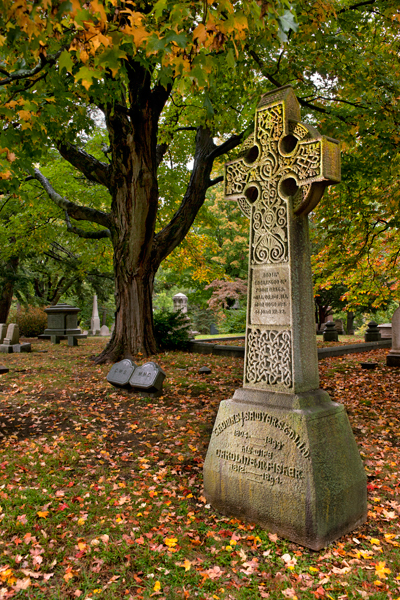This monument was completely in the dark until I illuminated it with flash. Doing so allowed the texture and inscriptions to reveal themselves. I must thank my friend Morrie who helped keep my camera dry under an umbrella while I moved around the structure with the flash.
Often, monuments and mausolea are designed by the same architect who designed other residences for the family. The Mary Baker Eddy monument does not follow that mold, instead, it was the result of a design competition. Egerton Swarthout, a New York architect, won the competition in 1914, with a tholos form design of a circular colonnade consisting of 8 columns each 15 feet in height. Swarthout omitted a roof because he felt there should be “nothing between the grave and sky but flowers”.
Originally, the architect specified the monument be constructed of Colorado or Vermont white marble. As an acknowledgement to the harsh New England winter, Bethel, Vermont, white granite was substituted because it withstands the elements significantly better than marble.
The Mary Baker Eddy monument has been acknowledged as one of the finest examples of the granite carver’s craft. Among the details incorporated into the design are the wild rose, which was Mrs. Eddy’s favorite flower, the morning glory, which opens to the light and closes to the darkness, the lamp of wisdom and a sheaf of wheat.











